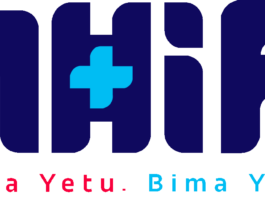Retirement planning is a critical component of financial management that is often neglected until it becomes a pressing concern.
While many envision a comfortable and stress-free retirement, achieving this goal demands meticulous preparation and foresight.
In this all-encompassing guide, we will delve into the vital steps you must take to secure your future and embrace a rewarding retirement.
Discover essential tips and strategies to ensure financial stability and enjoy the retirement you’ve always dreamed of.
Why Retirement Planning Matters
Retirement planning is not just about setting aside money for your golden years; it’s about ensuring financial security and peace of mind when you no longer have a regular income. Here are some key reasons why retirement planning matters:
- Financial Independence: Retirement planning allows you to maintain your standard of living even after you stop working. It provides the means to cover your expenses without relying solely on government benefits or family support.
- Longevity: People live longer than ever, meaning retirement can last for several decades. Adequate planning ensures you have enough funds to sustain yourself throughout your retirement.
- Inflation: The cost of living tends to rise over time due to inflation. By planning, you can account for inflation and ensure that your savings keep pace with the increasing costs.
- Healthcare Expenses: As you age, healthcare expenses tend to increase. Proper retirement planning helps you prepare for these expenses and avoid any financial strain they may cause.
Now that we understand the importance of retirement planning, let’s dive into the steps you need to take to secure your future.
Step 1: Set Clear Goals
The first step in any successful retirement plan is setting clear goals. Without specific objectives in mind, it becomes challenging to determine how much money you need to save or what lifestyle you want during retirement. Here are some factors to consider when setting your retirement goals:
Lifestyle Choices
Think about the kind of lifestyle you envision during your retirement years. Do you want to travel extensively, pursue hobbies, downsize, and live a simpler life? Consider your preferences and estimate the associated costs.
Retirement Age
Decide on the age at which you plan to retire. This will help determine the years you have left to save and invest for retirement.
Financial Obligations
Consider any financial obligations you may have during retirement, such as mortgage payments or supporting dependents. These factors will impact your retirement savings target.
Once you clearly understand your goals, it’s time to move on to the next step.
Step 2: Assess Your Current Financial Situation
Before you can start saving for retirement, assessing your current financial situation is essential. This involves taking stock of your income, expenses, assets, and liabilities. Here are some key aspects to consider:
Income
Calculate your current income from all sources, including salary, investments, rental properties, and any other sources of revenue.
Expenses
Track your monthly expenses to understand where your money is going. Categorize expenses into essential (e.g., housing, food) and discretionary (e.g., entertainment, dining out) to identify areas where you can cut back.
Assets
List all your assets, such as savings accounts, investments (stocks, bonds), real estate properties, and other valuable possessions.
Liabilities
Identify all outstanding debts like mortgages, car loans, credit card balances, and student loans. Understanding your liabilities will help you determine how much disposable income you have available for retirement savings.
By thoroughly assessing your current financial situation, you’ll gain valuable insights into where you stand financially and what adjustments need to be made for a secure retirement.
Step 3: Create a Realistic Budget
Once you have a clear picture of your finances, it’s time to create a realistic budget that aligns with your retirement goals. A budget helps you allocate your income effectively and ensures you’re saving enough for retirement. Here’s how to create a budget:
Track Your Expenses
Review your monthly expenses and identify areas where you can cut back. Look for discretionary expenses that can be reduced or eliminated without significantly impacting your quality of life.
Prioritize Savings
Make saving for retirement a priority in your budget. Aim to save a certain percentage of your monthly income, ideally at least 10-15%. Automate your savings by setting up automatic transfers from your paycheck or bank account.
Emergency Fund
Allocate funds towards building an emergency fund. This will provide a safety net in case of unexpected expenses or financial emergencies, reducing the need to dip into your retirement savings.
Review and Adjust Regularly
Regularly review and adjust your budget as needed. Life circumstances change, and ensuring that your budget remains aligned with your goals is important.
Creating a realistic budget is crucial for effective retirement planning. It allows you to manage your finances efficiently and ensures you’re on track to meet your retirement goals.
Step 4: Maximize Retirement Account Contributions
One of the most effective ways to save for retirement is by maximizing contributions to retirement accounts such as 401(k)s, IRAs, or pension plans. These accounts offer tax advantages and can significantly boost your savings over time. Here are some key points to consider:
Employer-Sponsored Retirement Plans
If your employer offers a retirement plan such as a 401(k), take full advantage of it. Contribute the maximum amount allowed, mainly if an employer match program exists. Employer matches are essentially free money that can significantly accelerate the growth of your retirement savings.
Individual Retirement Accounts (IRAs)
Consider opening an Individual Retirement Account (IRA) if you don’t have access to an employer-sponsored plan or want additional tax advantages. Traditional IRAs offer tax-deferred growth, while Roth IRAs provide tax-free withdrawals in retirement.
Catch-Up Contributions
If you’re 50 years or older, take advantage of catch-up contributions. These allow you to contribute additional funds to your retirement accounts above the regular contribution limits.
Maximizing your retirement account contributions is a powerful strategy for building a substantial nest egg. Take advantage of the available tax benefits and employer matches to maximize your savings potential.
Step 5: Diversify Your Investments
Investing is a crucial component of retirement planning. While saving money is essential, investing allows savings to grow and outpace inflation. Diversifying your investments helps mitigate risk and maximize returns. Here are some key points to consider:
Asset Allocation
Determine an appropriate asset allocation based on your risk tolerance and time horizon. This involves spreading your investments across asset classes, such as stocks, bonds, real estate, and cash equivalents.
Risk Management
Consider diversifying within each asset class as well. For example, invest in companies from different sectors or geographic regions within stocks. This helps reduce the impact of any single investment performing poorly.
Professional Advice
Consider seeking professional advice from a financial advisor or investment manager who can help you create a diversified portfolio tailored to your needs and goals.
Diversification is essential for managing risk and maximizing returns over the long term. By spreading your investments across various assets, you can minimize the impact of market fluctuations on your overall portfolio.
Step 6: Plan for Healthcare Expenses
Healthcare expenses tend to increase with age, making planning for these costs during retirement is crucial. Failing to account for healthcare expenses can quickly deplete your savings and strain your finances. Here’s how you can plan for healthcare expenses:
Medicare Coverage
Understand how Medicare works and what it covers. Medicare is a federal health insurance program for individuals 65 and older. Familiarize yourself with the different parts of Medicare (A, B, C, D) and the associated costs.
Supplemental Insurance
Consider purchasing supplemental insurance to cover expenses not covered by Medicare. Medigap policies, for example, help pay for deductibles, copayments, and other out-of-pocket costs.
Long-Term Care
Plan for long-term care expenses such as nursing home care or in-home assistance. Long-term care insurance can help cover these costs and protect your retirement savings.
Planning for healthcare expenses is an essential part of retirement planning. By understanding your options and preparing for potential medical costs, you can ensure that your retirement savings remain intact.
Step 7: Continuously Monitor and Adjust Your Plan
Retirement planning is not a one-time event but an ongoing process requiring regular monitoring and adjustments. Life circumstances change, financial markets fluctuate, and new opportunities arise. Here are some key points to consider:
Regular Check-Ins
Schedule regular check-ins with yourself or your financial advisor to review your retirement plan. Assess whether you’re on track to meet your goals or if any adjustments need to be made.
Rebalance Investments
Periodically rebalance your investment portfolio to maintain the desired asset allocation. This involves selling investments that have performed well and buying more underperforming ones.
Stay Informed
Stay informed about changes in tax laws, retirement account rules, or any other factors that may impact your retirement plan. Being proactive allows you to make necessary adjustments promptly.
By continuously monitoring and adjusting your retirement plan, you can ensure that it remains aligned with your goals and adapts to changing circumstances.
Conclusion
Retirement planning is a critical aspect of securing your future financial well-being. By following the steps outlined in this guide – setting clear goals, assessing your current financial situation, creating a realistic budget, maximizing retirement account contributions, diversifying your investments, planning for healthcare expenses, and continuously monitoring and adjusting your plan – you can take control of your retirement and enjoy a comfortable and worry-free future. Start planning today to secure the retirement you deserve.







